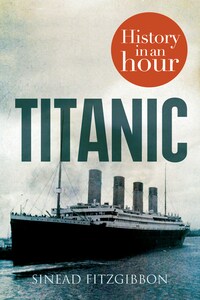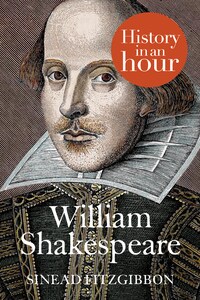History in an Hour is a series of ebooks to help the reader learn the basic facts of a given subject area. Everything you need to know is presented in a straightforward narrative and in chronological order. No embedded links to divert your attention, nor a daunting book of 600 pages with a 35-page introduction. Just straight in, to the point, sixty minutes, done. Then, having absorbed the basics, you may feel inspired to explore further. Give yourself sixty minutes and see what you can learn. .
To find out more visit http://historyinanhour.com or follow us on twitter: http://twitter.com/historyinanhour
Be not afraid of greatness: some are born great, some achieve greatness and some have greatness thrust upon them.
Although this oft-quoted phrase from Shakespeare’s Twelfth Night was coined some 400 years ago, during the reign of the first Queen Elizabeth, its sentiment is one which exemplifies the life and reign of an altogether more modern monarch, Queen Elizabeth II.
Born into one of Europe’s longest-running dynastic monarchies, the infant Princess Elizabeth, daughter of the Duke of York, was third in line to the throne at the time of her birth. But despite occupying this rather elevated position in the royal pecking order, the probability of her ever acceding to the highest position in the land was remote to say the least – so remote, in fact, that no one seriously contemplated the possibility that such a situation would ever arise.
The line of succession was expected to pass to her father’s older brother David, the as-yet unmarried Prince of Wales, and subsequently to his future children; It would take a calamity of epic proportions to propel Elizabeth onto the throne. The young princess, it seemed, was destined to live a rather unspectacular life in relative royal obscurity, albeit with the privilege and comfort accordant with her position. But, if there is anything at all to be learned from history, it is that things rarely go according to plan.
In 1936, when Elizabeth was just ten years old, a cataclysmic event shook the British Royal Family to its very core. Quite unexpectedly, Elizabeth found herself in the centre of a maelstrom, the circumstances of which would alter the course of her life forever.
In the first twenty years of the twentieth century, the British Royal Family had undergone a period of profound change. The death of Queen Victoria in 1901, after a 63-year reign, marked the end of an era for her subjects. While her passing left many feeling bereft, others were hopeful that the accession of her son, Edward VII, to the throne would reinvigorate a monarchy which had stagnated in the latter decades of his mother’s reign.
Queen Victoria (1887)
Edward VII did prove himself willing to embrace change. In what seemed to some to be indecent haste, the new king enthusiastically set about banishing the lingering cobwebs of his mother’s long rule. In addition to ordering a dramatic refurbishment of the royal residences, he also devised a number of spectacular ceremonies, including the Trooping of the Colour, with the aim of injecting some much-needed pomp and pageantry into the monarchy.
However, Edward VII’s reign was not destined to be a long one – when he died just nine years after becoming king, the Crown passed to his son, George V. Although the serious-minded and conservative George was diametrically opposite in temperament to his more liberal-leaning father, it was during his reign that the British monarchy overcame the most difficult challenge it had faced in centuries.
Edward VII
During the First World War, when anti-German feeling was at its zenith, a wave of Republican sentiment swept through the country, threatening the monarchy’s very existence. This disaffection was borne out of the fact the British Royal Family was an offshoot of the historic German Hanoverian dynasty. To add insult to injury, Kaiser Wilhelm II was George V’s first cousin – and these close family ties with the reviled enemy rankled with a significant proportion of the British public.
George V and Queen Mary in 1914
Around this time, other hereditary European sovereigns were being deposed at an alarming rate, including another of George’s cousins, Tsar Nicholas II of Russia. A terrible fate awaited him as he, and his family, would eventually be assassinated in an orgy of revolutionary zeal in 1918. George soon realized that, in order to prevent a similar fate befalling him, something had to be done, and fast.
Tsar Nicholas II and family (1904)
Eventually, in 1917, he hit on a solution to the problem. Displaying a keen survival instinct, which would continue to be a defining characteristic of the British monarchy to this day, George set about ‘Anglicizing’ his family. The only way to disassociate himself from his German ancestry, he decided, was to shed the family surname of Saxe-Coburg-Gotha in favour of one which would be more pleasing to the British ear. After considering, and dismissing, a number of possibilities including Tudor, Stuart, Plantagenet, York and Lancaster, George and his advisors finally settled on the perfect dynastic surname for the British Royal Family – by Royal Proclamation on 17 July 1917, the House of Windsor was born.











